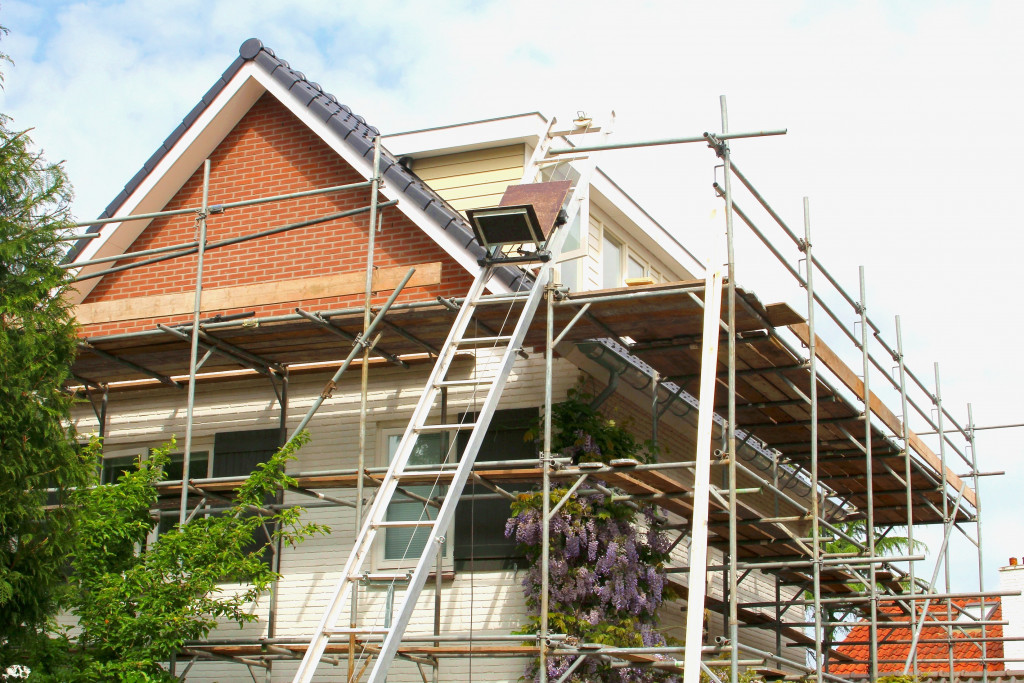Living in a condo offers many perks—easy maintenance, urban convenience, and built-in community—but it can also present unique challenges when you’re welcoming a new furry friend into your home. Unlike single-family homes with large yards and more privacy, condos typically have stricter regulations, shared walls, limited outdoor space, and unique lifestyle considerations. Still, for dog lovers determined to provide a happy and loving environment, condo living doesn’t have to stand in the way of adopting a new dog. With the right preparation and mindset, it can be a seamless and rewarding transition.
This guide is tailored for condo dwellers who are considering adding a canine companion to their household. Whether you’re a first-time pet parent or downsizing from a larger home, it’s important to be thoughtful about this exciting decision. Adopting a dog is a long-term commitment, and condo living adds a few extra layers to the preparation process.
If you’ve ever wondered whether your home is the right fit for a dog or how to adapt your space to meet your new pet’s needs, this guide is for you. By the end, you’ll feel more confident and better prepared to take on the joys and responsibilities of dog ownership in a condo setting. Let’s explore how to make this lifestyle transition a happy and successful one for everyone involved.
1. Best Breeds for You

Choosing the right dog begins with understanding how your living situation impacts your pet’s comfort. In a condo environment, space may be limited, and neighbors are nearby, so a quieter, more adaptable dog is usually the best fit. High-energy breeds or those with strong guarding instincts might find condo life stressful, whereas smaller or more laid-back dogs often adapt more easily. Your lifestyle—how much time you’re home, your exercise habits, and your tolerance for barking—all play a role in determining which breed suits your space.
Those living in a luxury condo may have access to extra amenities like rooftop dog parks or private balconies, but that doesn’t mean every breed will thrive. Breeds like French Bulldogs, Cavalier King Charles Spaniels, and Shih Tzus are popular among condo residents because they don’t require vast outdoor spaces and are known for their calm temperaments. Consider dogs that enjoy lounging indoors, are relatively easy to train, and don’t require frequent bursts of energy to feel content.
When adopting a new dog, you should think long-term about compatibility. While puppies are adorable, their training demands might not suit your current routine or environment. Matching the dog’s energy, noise level, and social needs to your lifestyle ensures both you and your dog live happily in harmony.
2. Prepping Your Space
Before bringing a dog home, it’s important to evaluate your condo space with a fresh set of eyes. What looks pet-safe to you might pose hidden dangers to a curious pup. From electrical cords to open balcony rails, condo living requires proactive pet-proofing. Creating a secure environment means planning, setting up dedicated areas for food, sleep, and potty training, and blocking off no-go zones with physical barriers or training.
If your unit includes a patio or balcony, partnering with a local fence company may be helpful. They can install rail guards or enclosures to ensure your dog can safely enjoy outdoor space without risking escape or injury. Some companies offer customized solutions for condo dwellers, including portable fencing or removable gates that won’t damage property. These enhancements are especially helpful if your building allows direct outdoor access.
Adopting a new dog means making your condo feel like home for both of you. Design a cozy corner with a bed, toys, and water. With thoughtful planning, your space can become both stylish and safe, helping your pet adjust more quickly and comfortably to condo living.
3. Handling Emergencies

No matter how well you prepare, unexpected health issues can and do arise. Condo life can be more challenging in an emergency, especially if elevators, shared hallways, and pet restrictions slow down your response time. Knowing what to do in case of a sudden illness or injury can make all the difference for your pet’s outcome. Every pet owner should have a plan in place, including contacts and transportation options.
Establishing a relationship with a trusted urgent care veterinarian early on is key. Unlike standard vets, these professionals offer extended hours and faster service for non-life-threatening but time-sensitive issues, like limping, vomiting, or allergic reactions. Make sure you know where the nearest clinic is located, how to contact them, and if they accept walk-ins. Keep important information easily accessible in case of an emergency.
When adopting a new dog, particularly a rescue or one with an unknown history, it’s vital to watch for signs of distress. Your dog may react differently in a new environment, so having emergency care ready can ease your anxiety and improve your pup’s chances of a quick recovery. Preparing for the worst ensures peace of mind while you focus on bonding with your new companion.
4. Keeping Them Clean
Cleanliness is especially important in a shared living environment like a condo. Regular grooming doesn’t just keep your dog looking great—it helps reduce shedding, prevents skin conditions, and keeps your home cleaner overall. When your dog is well-groomed, you’re less likely to encounter unpleasant odors, fur buildup, or the kinds of messes that create tension with neighbors.
Working with professional pet groomers ensures your dog receives the care they need, from nail trims to ear cleaning and coat maintenance. This is particularly useful for long-haired or double-coated breeds that shed often or are prone to matting. Mobile grooming services are a convenient solution for condo owners, bringing expert care to your door without needing to transport your pet through busy city streets or crowded elevators.
Adopting a new dog also means developing routines that keep your living space healthy for both of you. Between appointments, learn basic grooming techniques like brushing, paw cleaning, and using pet-safe wipes after walks. Not only will this help your dog stay fresh, but it also reinforces your bond and reduces the chance of issues that could affect your home environment.
5. Care While You’re Out

Even the most devoted dog owners can’t always be home. Whether you’re traveling for work or going on vacation, it’s essential to plan for your pet’s care in advance. Condo life can add logistical challenges when it comes to pet sitting or day care, especially if access is limited or visitors are restricted by building rules.
Reputable dog boarding facilities offer peace of mind while you’re away. These centers provide food, walks, playtime, and supervision in a safe, enclosed setting. Be sure to visit in person before making a decision, and ask whether the facility accommodates your dog’s size and temperament. Some facilities offer cage-free environments or private suites—ideal for dogs used to quiet condo settings.
When adopting a new dog, consider how separation anxiety may factor into your plans. Try shorter stays or trial visits before committing to longer periods. If you prefer in-home care, find a pet sitter experienced with high-rise living. They’ll understand leash rules, pet elevators, and noise sensitivities. Your dog’s comfort while you’re away will contribute to a smoother return and a stronger relationship.
6. Check Your Coverage
Before you bring your new dog home, it’s wise to review your policies and understand any potential liabilities. Not all policies automatically cover pet-related incidents, and condo associations often have their requirements around pet ownership. A little homework now can save you major stress later.
Some insurance companies offer pet-specific coverage. Others allow policy add-ons that protect you from unexpected incidents like bites, property damage, or vet visits. Ask your provider if owning a dog affects your premiums. Make sure, too, that you’re not unintentionally violating any coverage clauses by adopting a pet. It’s especially important if your breed has been labeled high-risk.
Adopting a new dog is a joyful experience, but it’s also a legal responsibility. Liability coverage and pet-related endorsements can protect you financially while giving your dog the freedom to be part of your daily condo life. Being proactive means you can relax and enjoy your new family member, knowing you’re covered if things don’t go exactly as planned.
7. Staying Tidy Inside

Dogs bring happiness—but also fur, dander, and dirt. In a condo, where space is limited and shared with others, cleanliness is non-negotiable. Even well-behaved pets can track in mud, shed on furniture, or leave behind odors. Routine cleaning ensures your home remains a welcoming space for both human and canine visitors.
Hiring a cleaning service that understands pet-related messes can save time and effort. These professionals know how to lift fur from upholstery, sanitize floors, and use non-toxic products that are safe for animals. Some services even specialize in homes with pets, making them ideal partners for busy condo owners.
Adopting a new dog means adding structure to your cleaning habits. Staying ahead of messes helps maintain harmony with your neighbors. Cleanliness also gives your dog a healthy, comfortable environment to live in.
8. Protecting Furniture
Your stylish condo decor doesn’t have to suffer just because you brought home a dog. Pets love lounging on couches and rugs, and even the cleanest dogs can leave behind odors or stains. A proactive approach to furniture care helps preserve your space—and your sanity.
Working with an experienced upholstery cleaner every few months can extend the life of your furniture. These experts use pet-safe solutions that lift fur, remove stains, and eliminate odors without damaging the fabric. If your dog is allowed on furniture, investing in regular cleanings is more cost-effective than constant replacements.
Adopting a new dog often means adjusting your expectations—yes, fur will happen. But with protective covers, routine spot cleaning, and scheduled deep cleans, your furniture can look just as good as it did before your new family member arrived. Small habits add up to big results when maintaining a clean and stylish home.
9. Planning for Illness
Even with a regular vet, there are times when medical attention can’t wait. From digestive issues to sudden injuries, knowing where to go during off-hours is critical. Condo residents may face additional delays due to elevator waits or garage access, so efficiency is key when seeking care.
A nearby pet urgent care facility can make all the difference. These clinics provide walk-in treatment for non-life-threatening conditions that still require immediate attention. Choose one with extended hours and staff trained to calm anxious pets.
Adopting a new dog includes preparing for every possibility. While it’s easy to focus on toys and treats, having a plan for medical care shows you’re truly ready to meet your dog’s needs. When emergencies happen, you’ll be grateful for your research and quick access to help.
10. Safe Greenery Tips
Adding greenery to your condo can boost aesthetics and even your well-being, but not all plants are pet-safe. Curious dogs may nibble on leaves or dig into pots, so it’s important to choose your indoor garden wisely. The wrong plant can cause anything from mild stomach upset to severe poisoning.
Before adopting a new dog, evaluate which houseplants you currently own. Remove anything toxic, such as lilies, sago palms, or philodendrons. Instead, opt for pet-friendly choices like spider plants, areca palms, or herbs like basil and parsley. Position plants out of reach or use hanging pots to keep your dog safe while maintaining your greenery goals.
Plants and pets can coexist beautifully with the right approach. Use heavy pots that won’t tip easily, and avoid fertilizers that can be harmful if ingested. Creating a safe, dog-friendly plant setup adds to the harmony of your condo and helps your space feel more like home.
Adopting a new dog while living in a condo doesn’t have to be complicated. It just requires intention, preparation, and the right resources. This guide has walked you through the most important considerations. From selecting a breed that fits your lifestyle to understanding the services and adjustments that support long-term success, each topic contributes to a more comfortable, safe, and joyful experience for both you and your dog.
A condo lifestyle often means smaller spaces and shared community rules. However, it doesn’t mean sacrificing the companionship and unconditional love that comes with dog ownership. With thoughtful decisions and a willingness to adapt, your home can become the perfect sanctuary for a new furry friend. Whether it’s choosing furniture that holds up to fur, planning for urgent care needs, or ensuring your condo association allows for pets, the steps you take now will shape the kind of life you and your dog enjoy together.
As a condo owner, this guide serves as your go-to resource for welcoming a canine friend into your space. By approaching the process with care and commitment, you’re setting the stage for a fulfilling life with your new pet. The journey of adopting a dog starts with knowledge. Now you’re more prepared than ever to take the first step.



